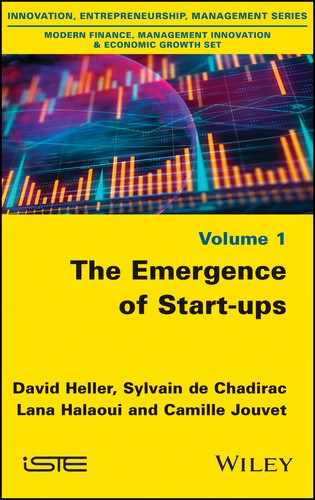Conclusion
Globalization has made it easier for foreign investors to finance French start-ups. In addition, investors have begun to create groups and lead networks in order to gain visibility among young companies seeking financing. The growth of these investors is supported by the efforts of the French government, which, being aware of the challenges of global competitiveness, is promoting entrepreneurship in France, in particular by setting up tax laws and institutions to facilitate access to finance for young structures.
Studies from all the three parts of this book have shown that seed capital is crucial for a company. Among a multitude of financing methods, fundraising from business angels is theoretically the most appropriate. It involves less cost for the company and remains more affordable. In addition, investors bring their experience, knowledge and network. However, empirically, French companies favor debt when it comes to finding new financing (after love money and public aid).
Thus, the opening of capital is used as a last resort in view of the governance reorganization it implies and the time to devote to the selection and fundraising process. Evaluating the company, presenting the project, negotiating with investors and then changing the governance of the company are very difficult steps for entrepreneurs. In other words, even though the entrepreneur wishes to raise funds from business angels or an investment fund, the project must be selected. Investors must be convinced, as they face risk when entering capital. Start-up projects are generally not yet anchored in a viable market and do not generate sufficient revenue to generate profitability and profits. This risk is further increased by information asymmetry.
In addition, when investors finance an innovative project, they are actually investing in the entrepreneur who convinced them and also in his ability to mobilize all the necessary resources at the right time to ensure the proper development of the structure. The role of the entrepreneur and his or her human capital are therefore fundamental. In this context, equity crowdfunding can be a relevant financing alternative. It raises a great deal of funds and produces very satisfactory results for the vast majority of companies that have used it. This financing method integrates two new players on the market: the platform and the crowd. The fundraising process is simpler even though it requires a high level of activity by the company during the campaign. The advantage is that the platform acts as an intermediary between the company and investors, and supports the company before, during and after the fundraising.
The first issue concerns evaluation of the project. It is carried out by the crowd, which is not mainly composed of experts in the field. The second issue is that many more investors enter the company’s capital and make governance more complicated to organize and manage. It is therefore less structured, but the platform can monitor this governance at the company’s request. The crowd nevertheless has advantages for the project because it participates in the validation of the project before the campaign alongside the platform. The project can then be confirmed with a community that is willing to monitor and finance it. This makes it possible to confirm the “time to market” of the innovative service or product. The risk incurred by investors is then reduced, as a potential market is confirmed.
A company that gets its project validated by the crowd and manages to raise funds for the project may also attract larger investors who see their risk decrease accordingly. It is now common to see business angels or investment funds joining forces with equity crowdfunding fundraising. We then note a complementarity between the different investors. Experts in the field have discussed about smoothing the financing chain for start-ups. The platforms also note the segmentation of crowds in order to make each community an expert in a specific field. Thus, even though equity crowdfunding must evolve to attract more entrepreneurs (without becoming another complicated process), it is perfectly integrated into the financing chain for young innovative structures.
